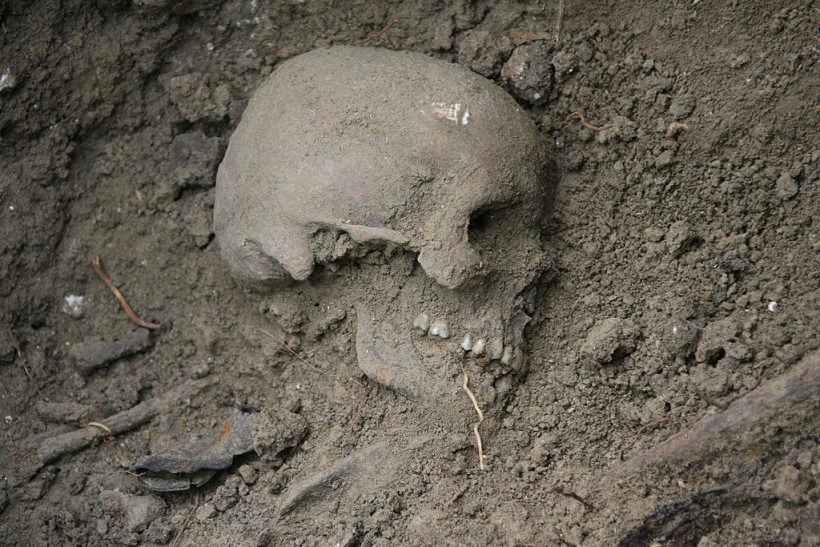For over a century, one of the oldest human fossils discovered in Spain has been misidentified as a Neandertal. This fossil may be the earliest Homo sapiens remains ever discovered in Europe and is not a Neandertal.
Archaeologists found the fossil jaw from 1887, according to Binghamton University experts, near Banyoles in Spain. Over the past century, it has been the subject of research.

Picture of a skull of one of the 13 German soldiers who where killed in southern France in August 1944 and exhumed from a makeshift forest grave, 18 October 2006 in Villeneuve-Loubet, southern France.
Since the Banyoles fossil is believed to have been preserved between 45,000 and 65,000 years ago (per Yahoo! News), when Neandertals were in Europe, the majority of academics have traditionally linked it to the Neandertal species.
The most recent studies employed virtual techniques, such as CT scanning the actual fossil. This was used to visually reconstruct the fossil's missing fragments and build a three-dimensional (3D) model for computer-based study.
The Neandertals, our closest evolutionary cousins, and our own species, Homo sapiens, were compared to see how they showed unique characteristics on the jaw of Banyoles.
No Neandertal Traits Found Based on 3D Geometric Morphometrics
The scientists employed a method known as "three-dimensional geometric morphometrics," which looks at the geometric details of the bone's form. This makes it possible to directly compare the general form of Banyoles, Neandertals, and H. sapiens.
However, the researchers made an unexpected discovery in the study's findings. Banyoles did not show any recognizable Neandertal traits and did not resemble Neandertals in general appearance.
The scientists discovered that these characteristics are also present in earlier human species, making a rapid identification of Homo sapiens challenging, even though the expression of Banyoles' attributes and overall form appeared to suit Homo sapiens better.
The study team also noted that Banyoles lacked a chin, one of the most distinguishing features of Homo sapiens mandibles.
Because the Banyoles jaw lacked any distinguishing characteristics of Neandertals, the researchers rejected the hypothesis that it was a hybrid of H. sapiens and Neandertals.
In contrast to modern populations, the scientists point out that some of the earliest preserved Homo sapiens specimens from Africa, going back more than 100,000 years before Banyoles, have less prominent chins.
One-of-a-Kind Human Species?
The study team proposed two possibilities for what the Banyoles mandible may represent: either a member of an as-yet-unidentified community of Homo sapiens who coexisted with Neandertals or a hybrid between members of this Homo sapiens group and an unidentified non-Neandertal human species.
The possibility of the latter argument is dismissed because Neandertals are the sole fossils from Europe during the time of the Banyoles.
Because of the current circumstances, researchers said Banyoles is a top candidate for ancient DNA or proteomic investigations, which might provide further information on its taxonomic affiliations.
RELATED ARTICLE: Statue of Hercules 'Missing Piece' Found? Archaeologist Suspects It Could Be the Marble Head Pulled from Sunken Ship
Check out more news and information on Archaeology in Science Times.














